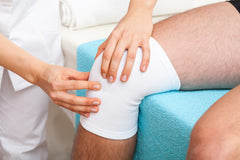
By Kevin F. Darr, MD
Forever Health Network Practitioner
Orthopedic injuries can hold you back from doing many of the things you love or from engaging in everyday activities. Thus far, the standard of care has been to repair damaged tendons, ligaments, and cartilage with surgery. In some cases, surgery may truly be needed; however, for many people, new non-surgical options are available and have the potential effectively to heal these conditions.
Chronic joint pain due to wear and tear throughout the years has typically resulted in joint replacement. Orthobiologic options are available to help reduce pain and improve function in those with degeneration of major joints who do not want joint replacement. Using the body’s own cells from bone marrow, fat tissue, and blood has the potential to reduce inflammation and possibly re-grow degenerated cartilage.
Adult stem cells already residing in the body have the ability to become many different cell types, depending on where they are injected in the body. For example, injecting these cells into the joint creates the potential for them to become cartilage cells, which may increase joint space and reduce pain. For advanced degeneration and moderate soft tissue injuries, mesenchymal stem cells, derived from fat and bone marrow, have the capability to elicit healing. Platelet-rich plasma (PRP), taken from whole blood via a centrifugation process, has anti-inflammatory capabilities, acting as a signal for other healing cells in the body to migrate to the area of injury. In some mild degenerative cases and minor soft tissue injuries, PRP can relieve pain and improve function with a simple injection into the injured area.
There are a variety of musculoskeletal disorders that can possibly be treated with PRP and/or adult mesenchymal stem cells:
- Rotator cuff and labral tears
- Osteoarthritis
- Tendonitis/tendinosis
- Meniscal tears
- Ligament sprains and tears
- Medial and lateral epicondylitis
- Plantar fasciitis
- Achilles tendonitis and partial tears
Orthobiologic options are coming of age in orthopedic medicine, utilizing the body’s own cells to heal damaged areas causing pain and dysfunction.
